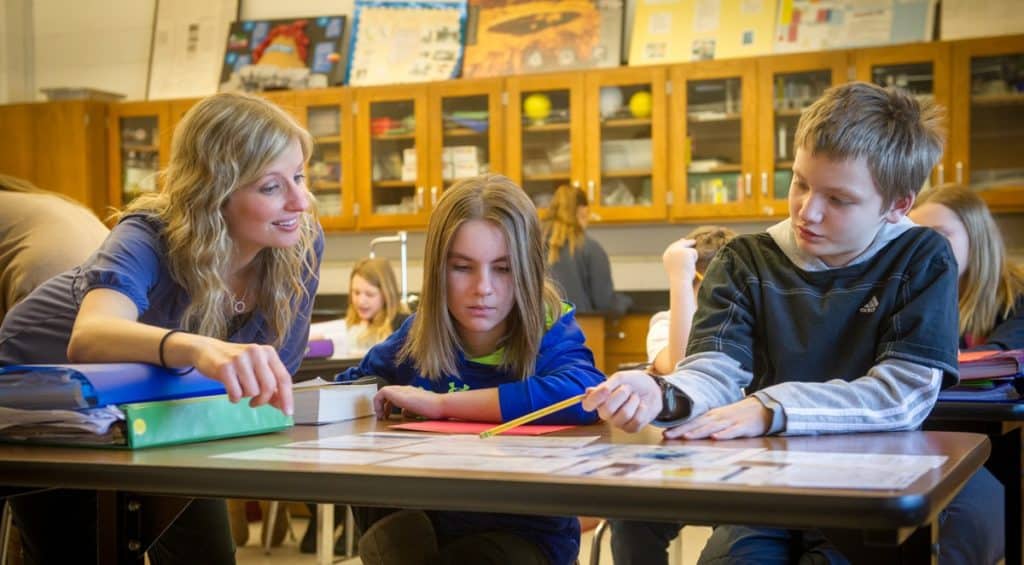
It’s the beginning of a new school year. You’re excited about your incoming class and have all kinds of plans for starting the year off right. Just one thing stands in the way: a few weeks in, standardized testing looms.
Testing throws off classroom schedules any time of year. But it can be especially disruptive during the first weeks of school, when teachers are still establishing ordinary classroom procedures. Fall testing can also hamper efforts to build a sense of classroom community. The relaxed, safe atmosphere that teachers seek to establish at the beginning of the year can be threatened by the anxiety that often dominates during test times.
Luckily, we don’t have to give up on establishing routines or building community in order to prepare students for test-taking success. In fact, you can achieve both goals by incorporating testing-prep into your beginning-of-the-year efforts to build a strong foundation for the year to come. Here are some strategies:
A teacher’s tone can dramatically influence the mood and atmosphere of the classroom, so it’s important to convey a sense of purpose and optimism about the upcoming tests.
If I roll my eyes, sigh, and say, “Okay, here’s some practice for these awful tests coming up,” I encourage negative attitudes about the tests. Or if I seem frantic, saying things like “You’ve got to do well! Our school is counting on you!” many students will likely develop stomachaches, headaches, and may even lose sleep.
Instead, try to project a positive, matter-of-fact attitude about testing. Explain that the tests are important, but not all-important: “These tests can give us a lot of information about what you already know and what we can work on next. You’re not supposed to get everything correct, but here’s a strategy that might help you do your best.”
Such language not only reduces anxiety about the tests, but also helps create a positive attitude toward school in general by sending the message that the adults at school are on the children’s side, supporting the children’s learning.
I’ve found that several brief testing-prep sessions pay more dividends than lengthier practice. Try sprinkling five- to ten-minute practice sessions throughout the day, and focus on familiarizing students with test-taking skills. For example, if you’re going over how to fill in bubble-sheets, try a question such as:
a. Play with a friend
b. Sports
c. Read
d. Play video games
e. Other
Sample items that don’t have wrong answers help children stay focused on the goal of the exercise—in this case, practicing how to fill in bubble-sheets. Plus, when students share answers to low-risk, personal questions such as the one above, they learn about each other and you learn about them, which helps build and strengthen community.
Morning Meeting is a daily gathering that sets a positive tone and prepares students for the day ahead. During testing periods, Morning Meeting is an important anchor for students. Starting each day of the testing period with this predictable, safe routine allows your community-building work to continue, and you can adapt any of the components of Morning Meeting—greeting, sharing, group activity, and morning message—to help students prepare for testing. For example:
One of the most important things we do with students at the beginning of the year is teach the routines that will make our school days run smoothly. Testing also goes more smoothly with the help of routines. You can use the Responsive Classroom practice called Interactive Modeling to teach the routines of testing, just as you would any classroom routine.
Interactive Modeling is a powerful technique for helping students learn and practice exactly how to complete a task. More often than not, children need clarification on procedures that may seem obvious to the teacher—procedures such as putting their test materials together at the end of a session.
Such modeling and practice can dramatically reduce the stress and tension that students feel when testing. Here are some other routines you could model and practice with students:
An extra recess or a whole-class game between testing sessions offers children a chance to blow off steam and have fun after sitting for long periods of time. Physical movement relieves stress and enables children to apply themselves to the next round of testing with renewed vigor. Plus, it can be a great way to continue to build a positive community, even in the middle of testing. Here are some ideas and considerations:
After a long day of testing, students are often exhausted. Some may feel disheartened or defeated if they think they didn’t do well. So while ending the day on a positive note is always important, it’s especially important during testing periods.
One positive way to end the day is to gather for a closing circle. You might play a game or share reflections about how the day went. Try an around-the-circle sharing about what went well on the day’s tests, or about fun things students will do when they get home. This allows you to keep establishing the thoughtful, caring tone you want for your classroom while helping the children go home in a better mood. The goal is to create a relaxed ending to the day, so that students feel “we’re all in this together,” and notice that you as their teacher are in control and are looking out for them.
Testing is an inescapable part of the beginning of the year for many of us and for our students. With some adaptations, though, we can do testing-prep without sacrificing community building. We owe it to our students and ourselves to do both well.
Mike Anderson is the author of the third, fourth, and fifth grade books in the What Every Teacher Needs to Know K–5 Series.